
About | Contact Us | Installments
 Oil for Living
Oil for Living
—Brian Black
Before Americans could have the Hula hoops or Twinkies that helped to define the postwar-era, there had to be a prodigious and reliable supply of crude oil. The best evidence of 20th century Americans’ overwhelming dependence on petroleum may be our complete neglect at providing it proper credit for enabling this standard of living. Even now, most of us barely get past a first-grade understanding of our dependence on oil. Oil does not just fuel our vehicles. Oil has changed our diet, our clothes, our neighborhoods, our jobs, our fun—in fact, everything about our society. “Oil for Living” provides some concepts for how we might add this story more accurately to the history of post-war America and the activities below will help you to extend these points in the classroom.
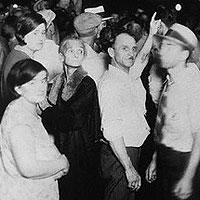 Terrorism and the American Experience
Terrorism and the American Experience
—Beverly Gage
Terrorism is often described as a twenty-first-century evil, a form of violence without context or precedent. But the questions that it poses and the responses that it has provoked in recent years are not altogether new. “Terrorism”—as a political tactic, a cultural concept, and a law enforcement issue—has an extensive history in the United States and around the world. This installment of Teaching the JAH introduces students to the historical study of terrorism in the United States. It asks them to think broadly about how to define terrorism and how to situate the history of political violence within the wide context of American history. The primary sources raise a range of questions: How did men and women who committed acts of terrorism explain and/or justify their actions within their own historical circumstances? How did other segments of American society understand and respond to their behavior? How did those particular understandings shape political and legal institutions in the United States? And what, if any, tradition of “terrorism” can be said to exist in—or against—the United States?
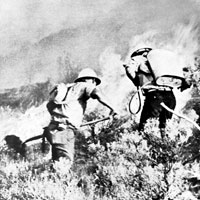 When the “Jungle” Met the Forest: Public Work, Civil Defense, and Prison Camps in Postwar California
When the “Jungle” Met the Forest: Public Work, Civil Defense, and Prison Camps in Postwar California
—Volker Jannsen
After World War II, California’s forest labor camps offered prisoners unusual liberties and community respect in return for often dangerous public works labor. But the Golden State’s fast-changing urban and rural landscapes eventually soured residents on this popular prison rehabilitation experiment and turned the conservation camp program into a catalyst for today’s prison geography. draws on research in the correspondence of the California Department of Corrections to highlight the role of Cold War military culture in prison reform. Exploring the racial, urban-rural, and political conflicts sparked by the conservation camp program, Janssen argues that prisons and incarceration policies are central to understanding the connection between America’s urban crisis and law-and-order conservatism.
 “The Specter of Environmentalism”: Wilderness, Environmental Politics, and the Evolution of the New Right
“The Specter of Environmentalism”: Wilderness, Environmental Politics, and the Evolution of the New Right
—James Morton Turner
The American West has been a fertile seedbed for opposition to environmental reform. James Morton Turner argues that populist opposition to environmental reform from the 1970s into the 1990s did not emerge most forcefully in battles over pollution, toxins, and other threats to public health, but in response to liberal Democrats and environmentalists’ championing of a new federal role in addressing long-standing issues such as wilderness protection. Through its national agenda, beginning in the 1970s the Republican party successfully harnessed growing anger over public lands protection. Republicans thereby made the public lands, especially those in the West, an issue essential to the rise of the conservative Right in the postwar era.
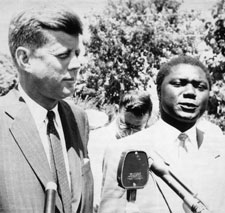 “Worth a Lot of Negro Votes”: Black Voters, Africa, and the 1960 Presidential Campaign
“Worth a Lot of Negro Votes”: Black Voters, Africa, and the 1960 Presidential Campaign
—James H. Meriwether
When John F. Kennedy telephoned Coretta Scott King to express sympathy for her jailed husband, he had little idea that his two-minute call would move to center stage in the 1960 presidential election. That call, James H. Meriwether argues, has obscured Kennedy’s broader efforts to secure the support of black voters while not alienating white voters in the no longer “solid South.” Kennedy drew on the growing transnational relationship black Americans had with an ancestral continent undergoing its own freedom struggles, revealing that he was more interested in Africa than in civil rights. Africa, the newest frontier for Kennedy, became a place where he could show his Cold War credentials, find common ground with black American voters, and strengthen his chances to win the presidency.
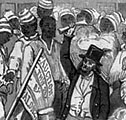 Reconfiguring the Old South: ‘Solving the Problem of Slavery,’ 1787–1838
Reconfiguring the Old South: ‘Solving the Problem of Slavery,’ 1787–1838
—Lacy Ford
Examining the choices that confronted the American South in the era of the cotton revolution, Lacy Ford outlines the tensions that appeared as both the upper and the lower South attempted reconfigurations of slavery after the foreign slave trade ended in 1808. Upper South politicians sought a demographic reconfiguration, or a “whitening” of the region, to reduce the number of slaves living there through both colonization and the sale of slaves to the lower South. Lower South leaders, meanwhile, sought an ideological reconfiguration to make slaveholding consistent with existing republican and emerging humanitarian ideals by transforming slavery into a “domestic” institution legitimated by paternalism. As Ford shows, the divergent efforts at reconfiguration pitted spokesmen of the upper and lower South against each other even as the antagonists displayed a shared and fundamental unwillingness to undermine slaveholding and slaveholders.
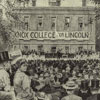 Houses Divided: Lincoln, Douglas, and the Political Landscape of 1858
Houses Divided: Lincoln, Douglas, and the Political Landscape of 1858
—Allen C. Guelzo
The Lincoln-Douglas debates are often portrayed as a tale of delayed gratification: Abraham Lincoln lost his bid for the U.S. Senate in 1858, only to find the notoriety garnered from the debates hurling him toward election as the sixteenth president in 1860. In this telling, the ferocity and dynamics of the 1858 state election become subordinate to the national contest of 1860, while the connections between local and national politics in the antebellum period are lost altogether. Based on examinations of state vote ledgers, untapped newspaper accounts, and archival collections, Allen C. Guelzo re-creates those connections at multiple levels, offering new conclusions concerning who organized, who participated and who “won” in 1858.
 The Army in the Marketplace: Recruiting an All-Volunteer Force
The Army in the Marketplace: Recruiting an All-Volunteer Force
—Beth Bailey
In 1973 the United States abandoned the draft in favor of an all-volunteer military, despite the warnings of the House Armed Services Committee that such a force could be achieved only through a draft. The primary mover behind the shift to a volunteer force was neither public discontent nor youthful protesters, but a group of free-market economists surrounding Richard M. Nixon. Beth Bailey analyzes the move from a troubled military system based on the obligations of (male) citizenship to one that relied on market logic and on sophisticated marketing campaigns that pinpointed the supposed psychological needs of America's youth and promoted military service as a way to fulfill them.
 Dorothea Lange: The Photographer as Agricultural Sociologist
Dorothea Lange: The Photographer as Agricultural Sociologist
—Linda Gordon
Linda Gordon examines the photographer Dorothea Lange as both a paid propagandist for federal agricultural programs and a knowledgeable critic of the business of U.S. agriculture. Lange’s photographs called attention to the horrendous working and living conditions of farm workers, denounced the practices of large-scale agribusiness, and revealed the inadequacy of New Deal attempts to help farm workers. This installment of “Teaching the JAH” gives students the opportunity to explore the functions of the Farm Security Administration and its photography project. Using photographs, maps, letters, reports, and other documents, the exercises help students understand the conditions in which migrant farm workers lived and how Lange, through her photographic work, tried to improve those conditions. The exercises also ask students to examine Lange’s photographic methods and why she cared so much about her photograph’s textual captions.
 Nightmares on Elm Street: Demobilizing Chicago, 1943–1953
Nightmares on Elm Street: Demobilizing Chicago, 1943–1953
—Laura McEnaney
Examining how ordinary people made the shift from wartime to postwar life in Chicago, Laura McEnaney offers a way to broaden and extend the narratives we teach about World War II. Her study of demobilization takes readers inside the city’s apartment housing, drawing on captivating testimony from landlords and tenants as they fought over the meanings and spoils of the war. These stories of demobilization’s daily grind reveal a more complex history of the so-called greatest generation and point to the need to understand how people experience the transition from war to peace. The struggles in Chicago over the conduct and power of the postwar state illuminate what people thought they had been fighting for during the war.
 From Royal to Republican: The Classical Image in Early America
From Royal to Republican: The Classical Image in Early America
—Caroline Winterer
Revolutionary era Americans were enamored with classical icons--the toga-draped divinities and laurel-crowned heroes who gave ancient substance to eighteenth-century politics, warfare, and empire. But, as Caroline Winterer shows in our featured article, classical images were far from static as newly independent Americans reshaped them to fit the needs of a modern republic with its own expansionist possibilities. In this installment of “Teaching the JAH̶ Winterer uses elements of a classical iconography to suggest the significance of its persistence through time in image and story.
 Flaunting the Freak Flag:
Flaunting the Freak Flag:
Karr v. Schmidt and the Great Hair Debate in American High Schools, 1965–1975
—Gael Graham
In the late 1960s and early 1970s, high schools were political and cultural battlegrounds. Gael Graham’s article uses conflicts over boys’ long hair to trace the connections between the desire for personal autonomy and the quest for power and participation among public high school students. Centering her narrative on the legal battles between Chesley Karr, a male high school student in El Paso, Texas, and school officials in that city, Graham sheds light on the high school student rights movement and the public debate about long hair. This installment of “Teaching the JAH” gives students the opportunity to explore the legal issues of the Karr case as well as the broader question of high school student rights. The exercises draw on a variety of documentary sources, including student dress codes, student declarations of rights, court cases, and letters to newspaper editors.
 Co-workers in the Kingdom of Culture:
Co-workers in the Kingdom of Culture:
Black Swan Records and the Political Economy of African American Music
—David Suisman
David Suisman’s article on Black Swan Records, the first major black-owned record company, raises provocative issues about music, racial and cultural uplift, economic development, and the relationship between art and business. This installment of “Teaching the JAH” offers students the opportunity to investigate those issues in a range of primary sources. In both the article and the exercises, Suisman presents music and sound as historical sources that need to be understood not just in aesthetic or cultural terms but also in their sociopolitical context.
 The Way of Improvement Leads Home: Philip Vickers Fithian’s Rural Enlightenment
The Way of Improvement Leads Home: Philip Vickers Fithian’s Rural Enlightenment
—John Fea
John Fea’s article explores the meaning of the Enlightenment for ordinary Americans in the eighteenth century. This installment of “Teaching the JAH” focuses on the life of Philip Vickers Fithian, one of the century’s most prolific diarists, to help students locate the Enlightenment historically in a distinctively American place.
 Meta Warrick’s 1907 ‘Negro Tableaux’ and (Re)Presenting African American Historical Memory
Meta Warrick’s 1907 ‘Negro Tableaux’ and (Re)Presenting African American Historical Memory
—W. Fitzhugh Brundage
As the twentieth century began, African American artists and intellectuals struggled with the challenge of how to portray black life in the United States without giving in to either sentimentality or racial stereotypes. W. Fitzhugh Brundage, looks at how one black sculptor, Meta Warrick, took on this challenge by creating a set of historical tableaux for the Jamestown Tercentennial Exposition in 1907.
 Damming Afghanistan: Modernization in a Buffer State
Damming Afghanistan: Modernization in a Buffer State
—Nick Cullather
Decades before the turmoil unleashed by the attacks of September 11, 2001, a succession of American administrations became caught up in development schemes in Afghanistan, including a massive dam-building project modeled on the Tennessee Valley Authority. In this installment of “Teaching the JAH,” Nick Cullather uses his article as a threshold for thinking not only about Afghanistan, but also about the dreams of modernity that underlie visions of national development.
 Empires, Exceptions, and Anglo-Saxons: Race and Rule between the British and United States Empires, 1880–1910
Empires, Exceptions, and Anglo-Saxons: Race and Rule between the British and United States Empires, 1880–1910
—Paul A. Kramer
Paul A. Kramer’s article explores the relation between empire, race, and nationalism debated by Americans and Britons as each nation expanded its global presence in the late nineteenth and early twentieth centuries.
 Culture, Power, and Mission to Moscow: Film and Soviet-American Relations during World War II
Culture, Power, and Mission to Moscow: Film and Soviet-American Relations during World War II
—Todd Bennett
Todd Bennett’s article helps students think about the ties between diplomacy and popular culture in this era by focusing on the government-sponsored Hollywood movie Mission to Moscow.
 Evolution of John Doe: Pictures, the Public, and the Scopes Trial Debate
Evolution of John Doe: Pictures, the Public, and the Scopes Trial Debate
—Constance Areson Clark
Constance Areson Clark’s article introduces the visual images of evolution used by scientists in the late nineteenth and early twentieth centuries. It complicates the usual history of evolution by investigating the assumptions scientists incorporated into their diagrams, illustrations, and exhibits. The teaching documents provide the resources to explore the history of science during a lecture on the Scopes trial.